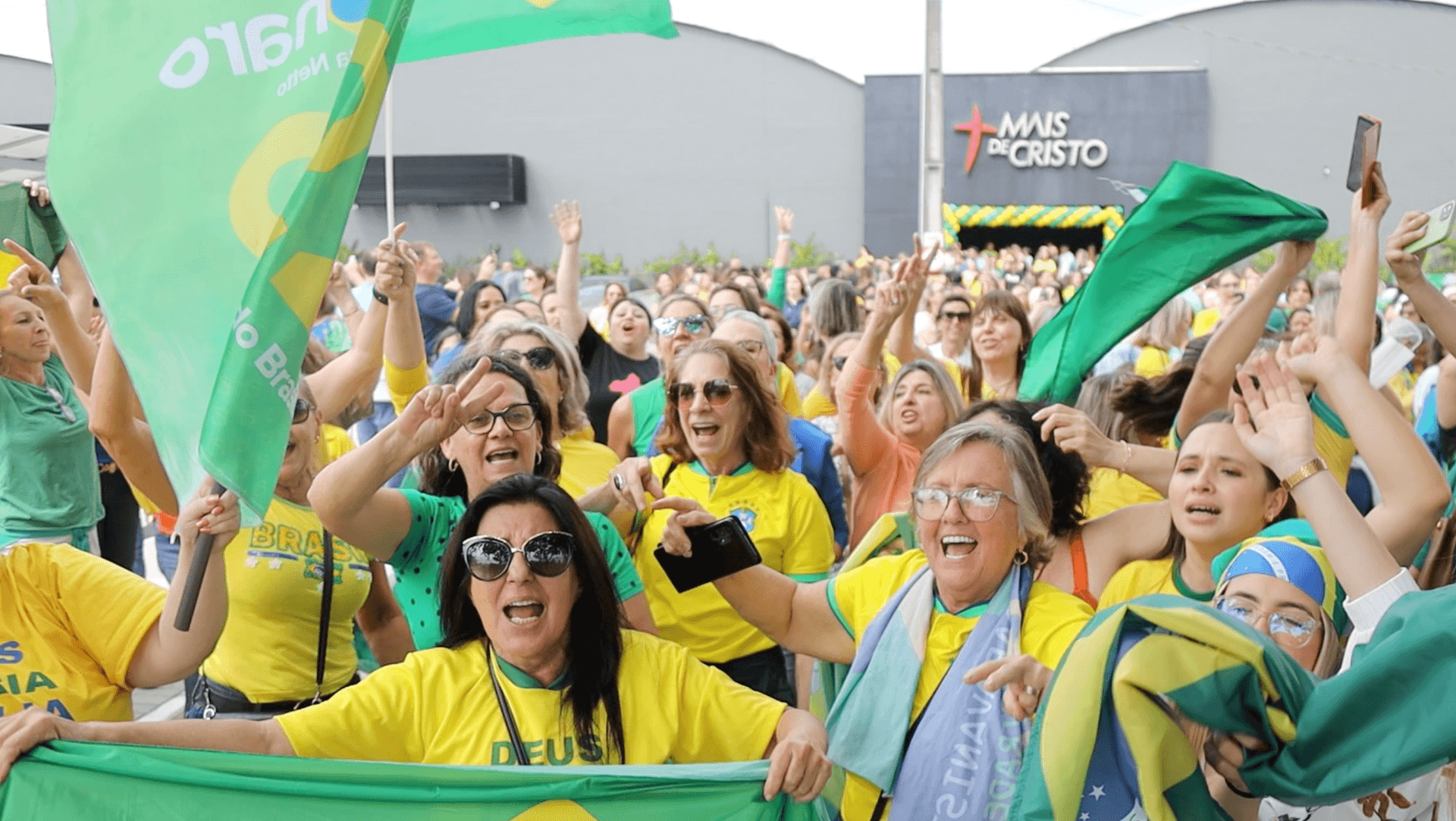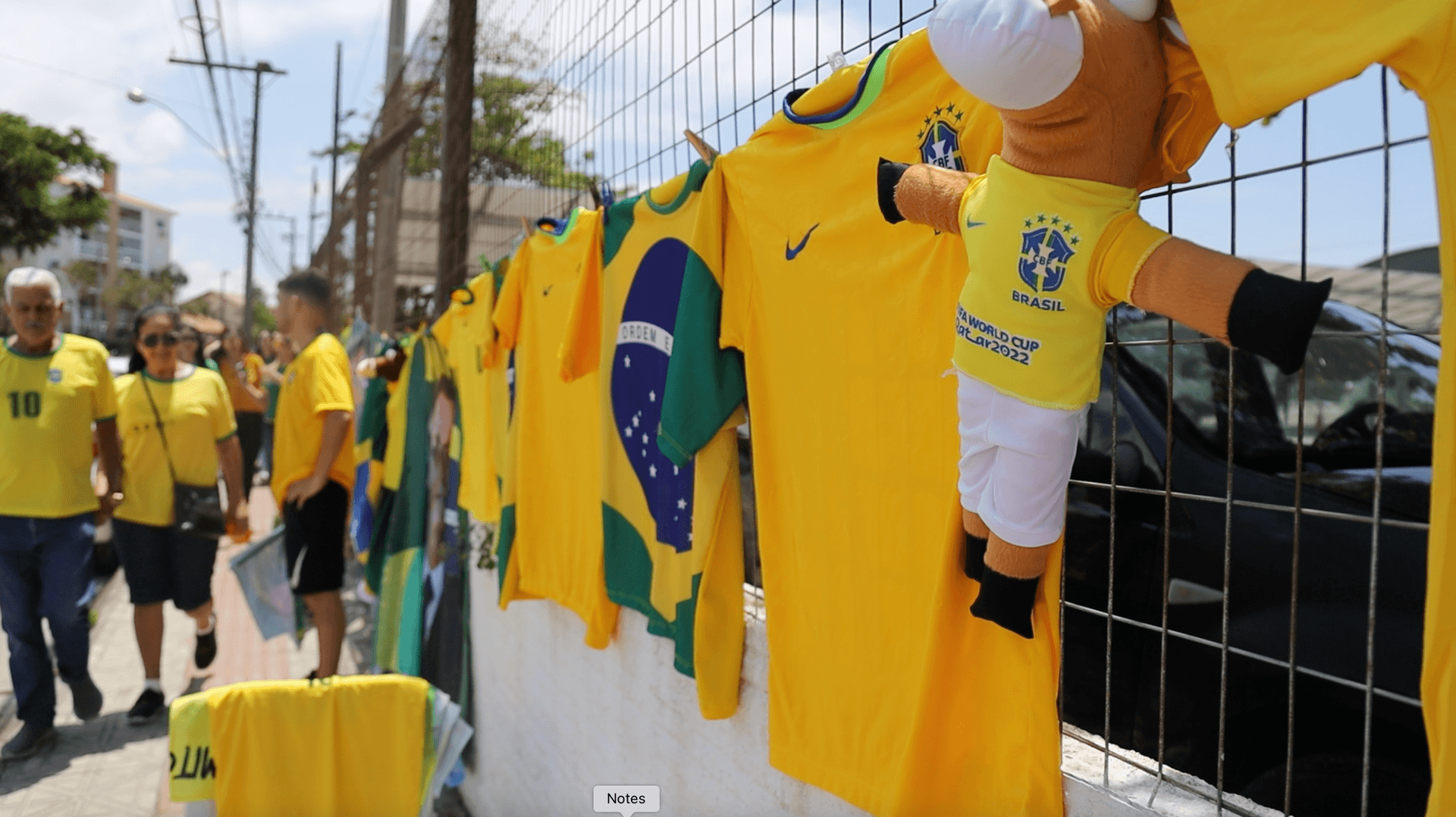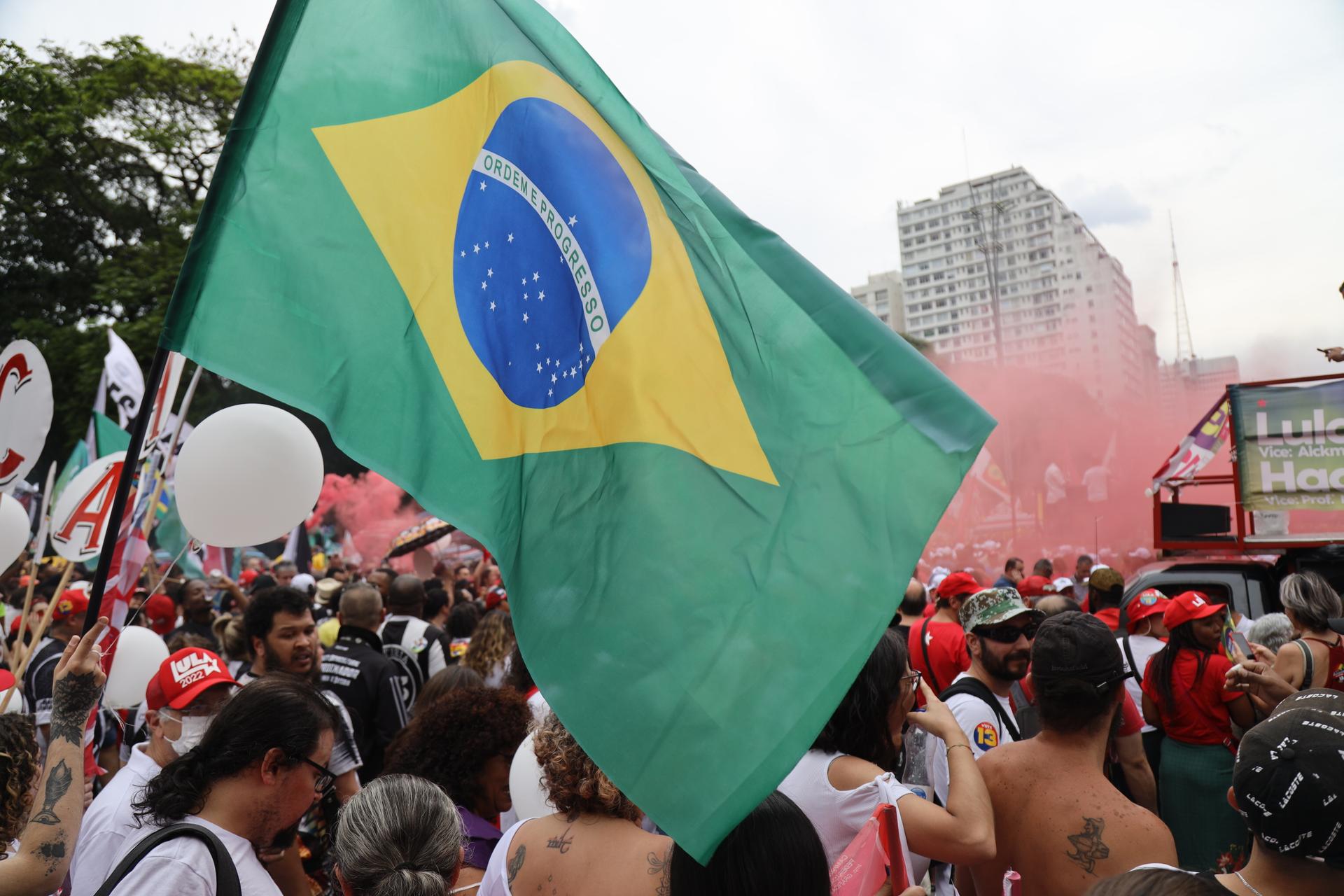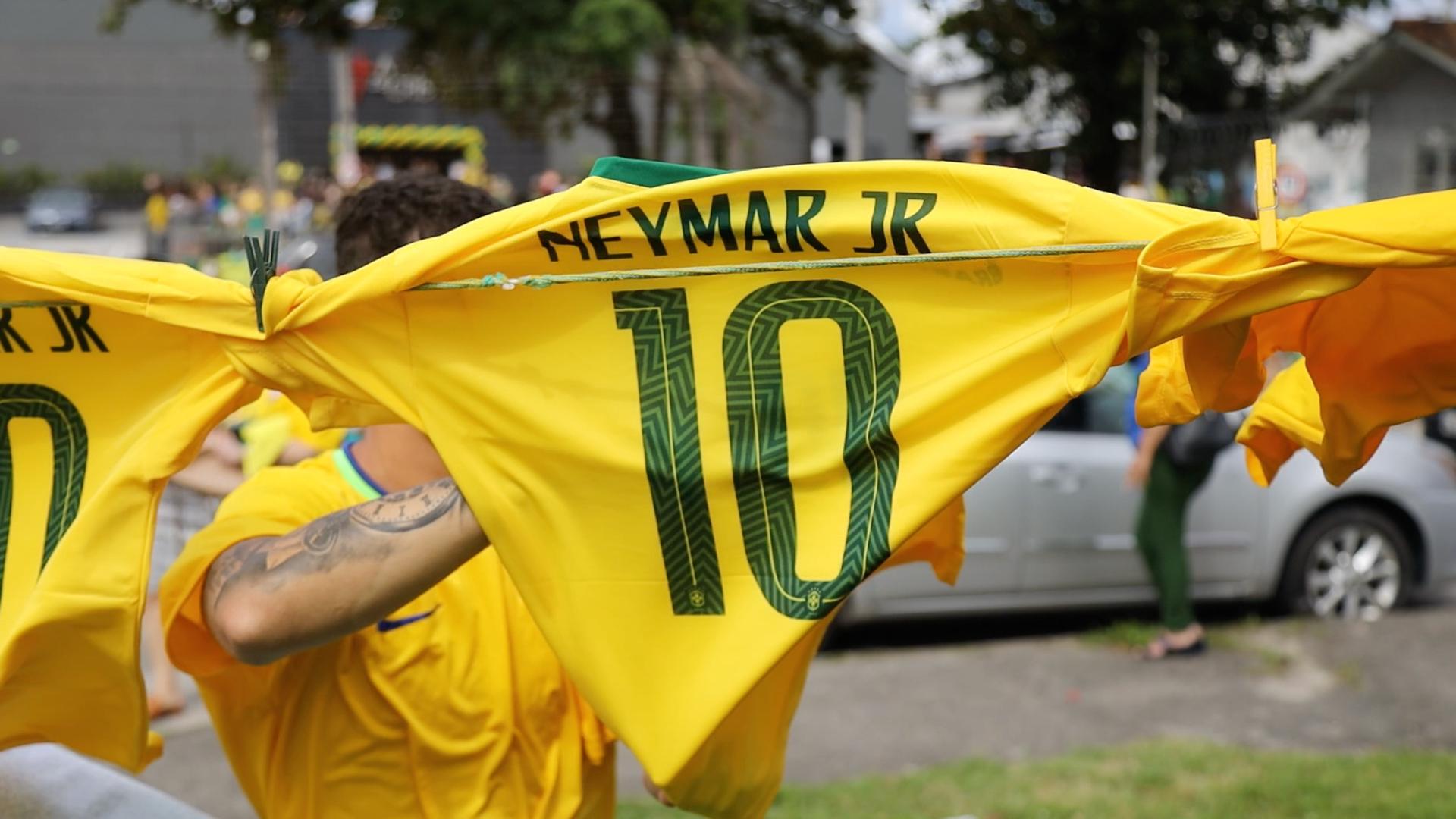Soccer is a national obsession in Brazil, which has won more World Cups than any other country.
And this year, Brazil is favored to win the World Cup once again. But fans are grappling with the team’s iconic jersey colors: yellow and green.
Those are also the country’s colors, including the nation’s flag, but they have been co-opted by far-right President Jair Bolsonaro, whose political rallies are characterized by a sea of yellow and green.
Bolsonaro’s embrace of the country’s colors has divided Brazilians who reelected former President Luiz Inácio Lula da Silva (known simply as Lula) in late October.
Lula takes office on Jan. 1. Bolsonaro didn’t recognize Lula’s win or his own defeat, but he authorized his chief-of-staff to carry out the process of transition, which began earlier this month. Still, Bolsonaro supporters are protesting the election results and calling for military intervention. Meanwhile, the national colors continue to be a prominent part of their displays.

“There has been a kidnapping of the flag and the shirt,” said Gustavo Turck, a journalist in Porto Alegre. “Literally, there has been a kidnapping of these symbols by this political sect.”
It has had a profound impact on the way Brazilians see their national imagery.
“My daughter is 9. It’s her second World Cup,” Turck said. “But today, she sees the flag or the Brazilian soccer jersey, and she immediately identifies it with Bolsonaro.”
That is by design. Bolsonaro is not the first Brazilian leader to appropriate the country’s symbols. Brazil’s military dictatorship of the 1960s and 1970s strategically used the flag and the Brazilian soccer jersey to generate unity around the regime.
“The Brazilian military used these symbols as a way of showing patriotism, and the people who were against this were seen as enemies of the state,” said Carolina Botelho, a political scientist at the University of São Paulo’s Institute of Advanced Studies.
Bolsonaro has long praised the military dictatorship and even called for its return. And that has led many of his opponents to reject the flag, the colors and the national soccer jersey.
But some say that Lula could change that. During the election campaign, Lula said the yellow and green should represent all Brazilians, not just one group.

“Happily, since Lula won, we’ll be able to use it again. People already are. But it’s a process. It won’t be immediate,” said Marcelo Idiarte, a blogger and avid soccer fan, who added that he has not worn the national jersey for years, because of what it has come to represent.
“[The World Cup] could get others to use the colors. But the election is still very recent,” said sports historian Carolina Fernandes da Silva. “As are the illegal protests of Bolsonaro supporters calling for military intervention and trying to undermine the vote.”

Brazil’s top player Neymar da Silva Santos Júnior (known as Neymar) also did not help. He avidly backed Bolsonaro, participating in live events with the president. In a video that went viral over social media, he danced to one of Bolsonaro’s campaign songs.
But some Lula supporters say that they can see beyond that.
“The flag is a national symbol. It doesn’t represent one party. It represents us all, regardless of political party or ideology,” said Alex Brazil, a doctor who attended a Lula rally in late October with a green Brazilian flag draped over his shoulders. “So, taking back the flag is to rescue Brazil. It’s to rescue our democracy.”
Our coverage reaches millions each week, but only a small fraction of listeners contribute to sustain our program. We still need 224 more people to donate $100 or $10/monthly to unlock our $67,000 match. Will you help us get there today?
